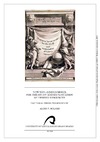Identificador persistente para citar o vincular este elemento:
https://accedacris.ulpgc.es/jspui/handle/10553/2239
| Título: | New non-linear model for the study and the exploitation of fishery resources | Otros títulos: | Nuevo modelo no-lineal para el estudio y la explotación de recursos pesqueros | Autores/as: | Solari, Aldo Pier | Director/a : | Bas Peired, Carlos Castro Hernández, José Juan Martín González, Juan Manuel |
Clasificación UNESCO: | 1207 Investigación operativa 310506 Técnicas pesqueras |
Palabras clave: | Recursos pesqueros Gestión Modelos matemáticos |
Fecha de publicación: | 2008 | Proyectos: | Dinámica Poblacional y Posibles Estrategias Conservación Del Atun Bonito-Listado (Katsuwonus Pelamis) en El Atlantico Centro Oriental. Dinámica Poblacional Del Pulpo Común (Octopus Vulgaris) en El Atlántico Centro-Oriental: Nuevo Marco Conceptual. Pi042004/139 |
Publicación relacionada: | http://www..bioges.org | Resumen: | A novel modeling approach is put forward in which recruitment (to the population, area and fishery) is regarded as a system or summation of non-linear functions with dynamic features ranging from chaos (the ceiling, when external conditions are extremely benign), going through a range of relatively stable, converging cycles (as external stress increases), to a quasi-standstill state with no clear oscillations (when the minimum viable population is being approached). A system which consists of a dynamical continuum governed by a variable carrying capacity with local dynamics in different orbits of stability is proposed. The author is first to formalize in the scientific literature the concepts of variable carrying capacity, multiple, linked orbits of stability and seudo-equilibria, and dynamical similarity at several spatiotemporal scales, as well. The model has been the first which could link all of the known population mechanics (that is, density-dependent, densityindependent and inverse-density-dependence processes) in a relatively simple equation. This system model which is limited by a maximum carrying capacity and an overall minimum viable population is highly flexible as it has the capacity to, persistently, evolve and return within a range of dynamical states allowing for the description of multi-oscillatory population systems with features which may be caused by stable, periodic, multi-periodic and chaotic dynamics... | Facultad: | Facultad de Ciencias del Mar | URI: | https://accedacris.ulpgc.es/handle/10553/2239 | ISBN: | 978-84-691-7157-8 |
| Colección: | Tesis doctoral |
Visitas
140
actualizado el 10-ago-2024
Descargas
121
actualizado el 10-ago-2024
Google ScholarTM
Verifica
Altmetric
Comparte
Exporta metadatos
Los elementos en ULPGC accedaCRIS están protegidos por derechos de autor con todos los derechos reservados, a menos que se indique lo contrario.
